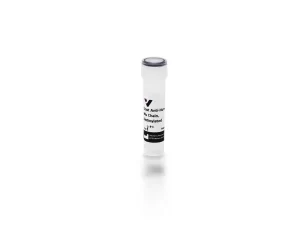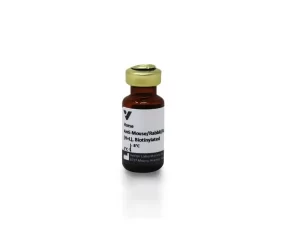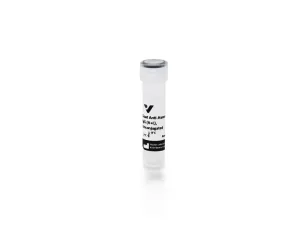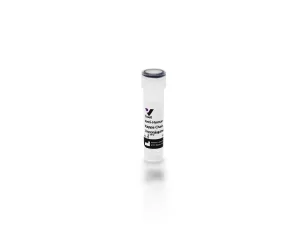Vector Laboratories is closed for the President’s Day on Monday, February 19th. We will be back in the office on Tuesday, February 20th.
We will respond to emails upon our return. Have a wonderful day.
Menu
Vector Laboratories is closed for the President’s Day on Monday, February 19th. We will be back in the office on Tuesday, February 20th.
We will respond to emails upon our return. Have a wonderful day.
This IgG preparation is intended for use as a control for primary antibodies made in mouse. This antibody has been purified from pooled serum of healthy adult animals and contains a spectrum of the IgG subclasses present in serum. The control antibody should be applied to the tissue section at the same concentration as the primary antibody to indicate whether staining is specific for the antigen or is nonspecific adsorption of primary antibody to tissue sites.
| Unit Size | 1 mg |
|---|---|
| Applications | Immunohistochemistry / Immunocytochemistry, Immunofluorescence, Blotting Applications |
| Recommended Storage | 2-8 °C; Store frozen for long term storage |
| Recommended Usage | Reconstitute by adding 0.5 ml water.The resulting solution will have the following composition:10 mM phosphate, 0.15 M NaCl, pH 7.8, 0.08% sodium azide, 20 mg/ml sucrose. ALLOW THE PROTEIN TO DISSOLVE WITHOUT VIGOROUS AGITATION. |
| Conjugate | Unconjugated |
| Host Species | Mouse |
A commonly used negative control is omission of the primary antibody. While this control addresses whether the secondary antibody reagents are a source of staining, inadvertent binding of the primary antibody to the tissue can occur. Various tissue elements such as Fc receptors and charged molecules may bind the primary antibody non-specifically. Simply omitting the primary antibody as a negative control would miss potential false positive staining by this means. A few “publication worthy” negative controls for IHC are listed below: 1) Preabsorption of primary antibody with the immunogen used to generate the antibody can be employed. The working dilution of the primary antibody and an optimized concentration of the immunogen are incubated together for a period prior to application to the specimen. Lack of staining would indicate specificity of the primary antibody to the target antigen in solution. Positive staining using this method, however, may indicate lack of specificity of the primary antibody and/or the primary antibody is being bound by tissue elements. To rule out the latter, this control can be used in combination with suggestion no. 2 below. Note that adsorption controls are not always feasible or practical depending on the cost or source of the immunogen. 2) Use of an isotype control (e.g. “non-immune” mouse IgG), matched to that of the primary antibody and applied at the same protein concentration as the primary antibody, is probably the most widely used negative control. This control addresses whether tissue elements are inadvertently binding immunoglobulin from the same species as the primary antibody, in addition to non-specific binding from the secondary detection reagents. In most cases, use of a sub-class of isotype immunoglobulin (e.g. mouse IgG2a or IgG2b) is not required. Note that the use of pre-immune immunoglobulin, obtained prior to immunization, could also be used. However, it is very unusual for commercial vendors to offer pre-immune immunoglobulin. 3) Substitution of the primary antibody with an “irrelevant antibody” is also a suitable negative control. The term “irrelevant” refers to a primary antibody of the same isotype as the specific primary antibody (i.e. mouse IgG) and applied at the same concentration, that is known not to bind to a target in the tissue specimen. An example would be an anti-cytokeratin antibody on smooth muscle tissue. As with negative control no. 1 above, lack of staining indicates tissue elements are not binding this isotype of immunoglobulin. 4) In some cases, the target antigen can be removed from the tissue specimen as a sort of “knock-out” preparation. Once the target antigen has been removed, the complete assay is run to determine lack of staining. One method to remove the target antigen is using defined enzyme digestion. Examples include the use of a collagenase if the target antigen is collagen, or hyaluronidase if the target antigen is hyaluronic acid. Of course, there are limitations to this approach, however, variations of this “deletion” or “knock-out” approach would be valid negative controls.
Yes we do. Please visit our comprehensive Immunohistochemistry (IHC) page for assistance with each step of the IHC workflow. This resource contains a great deal of technical material including product recommendations and links to other technical documentation / videos / webinars.
Applicable patents and legal notices are available at legal notices.




Stay in the Loop. Join Our Online Community
Together we breakthroughTM

©Vector Laboratories, Inc. 2024 All Rights Reserved.
How do I Request a Quote?
To request a quote for products: